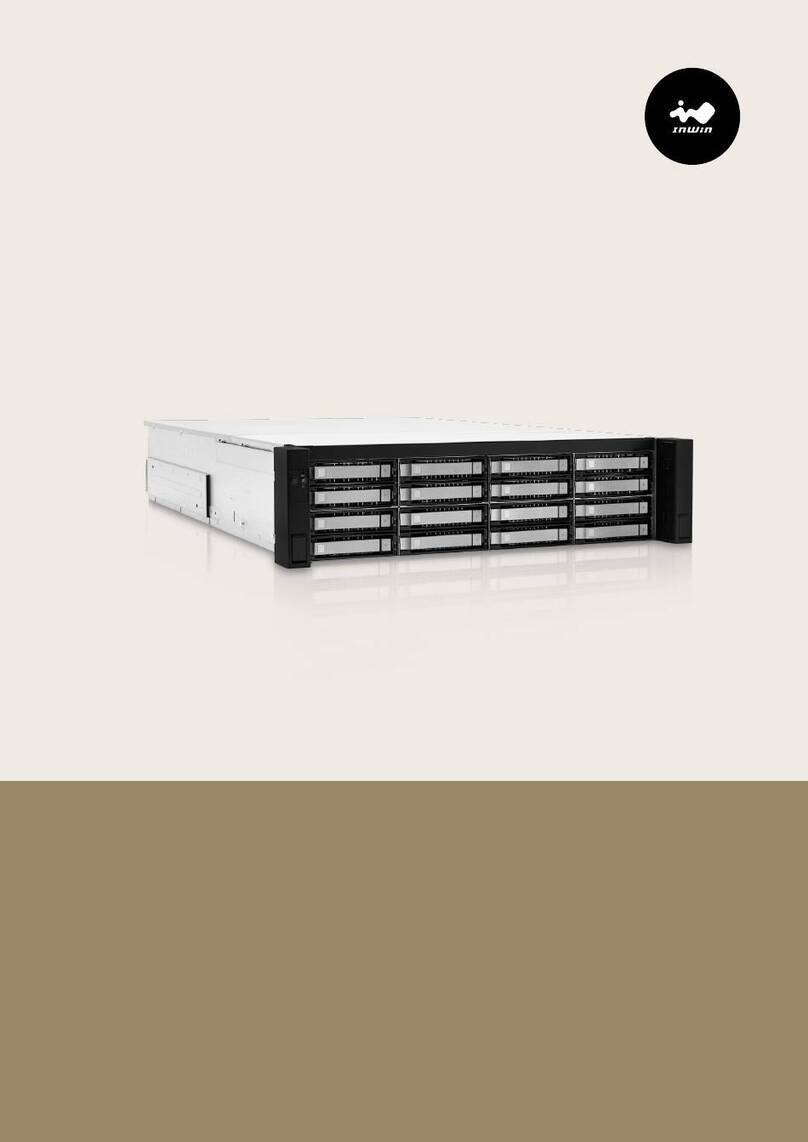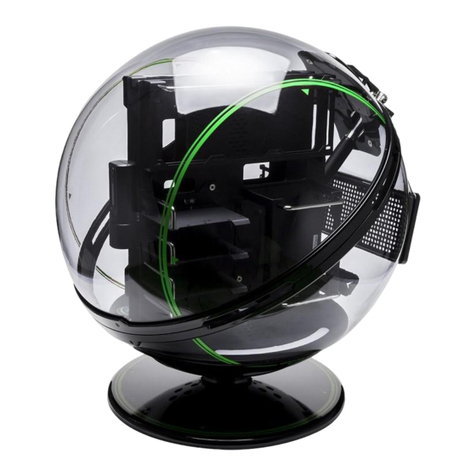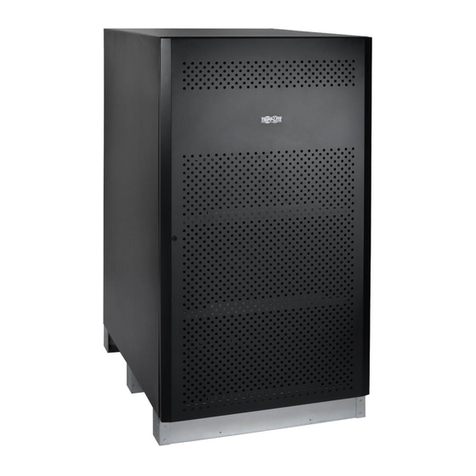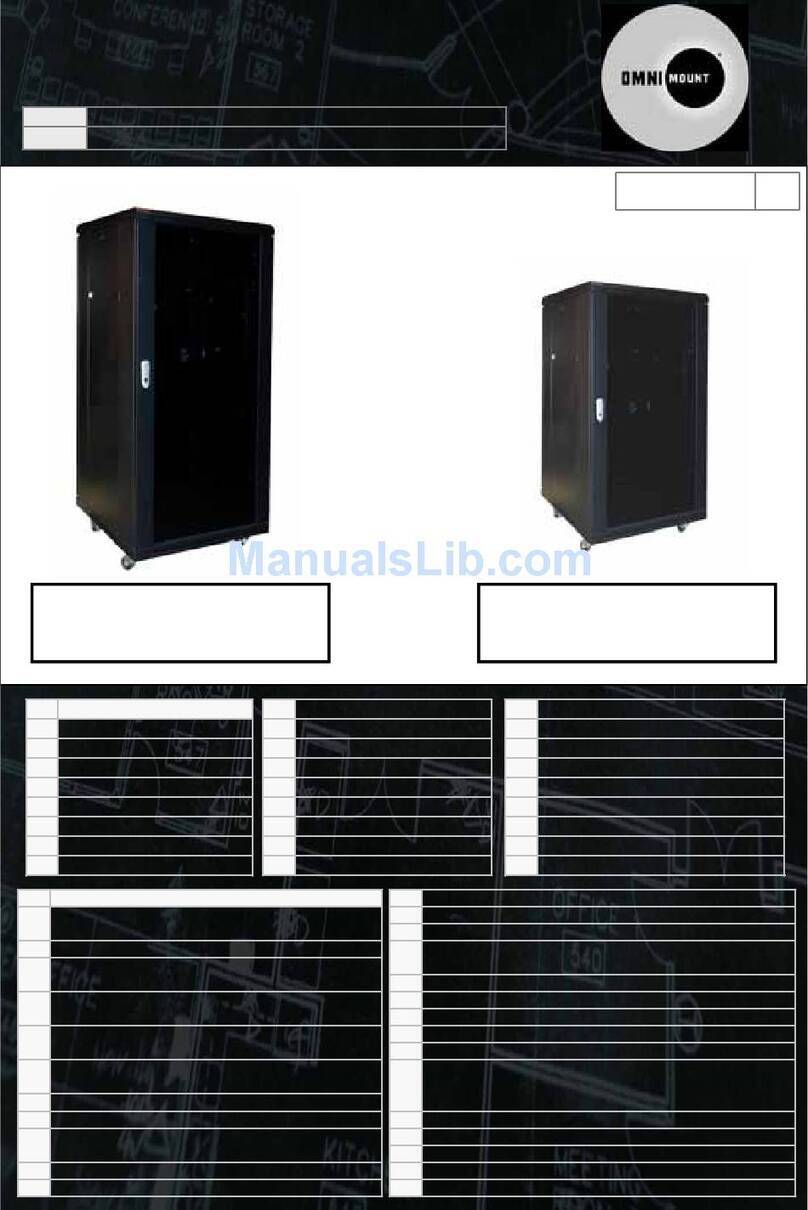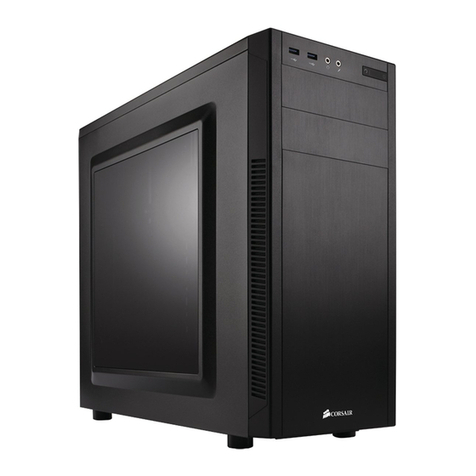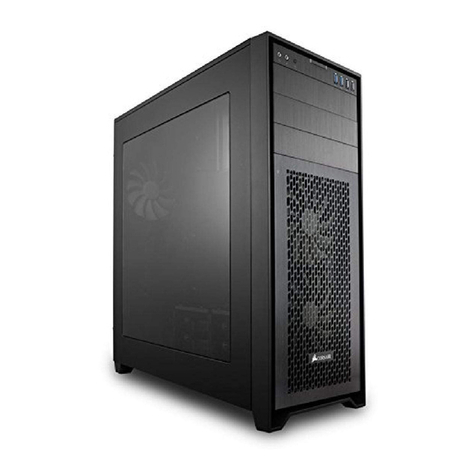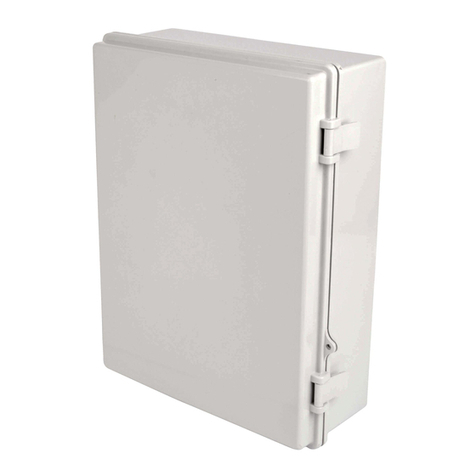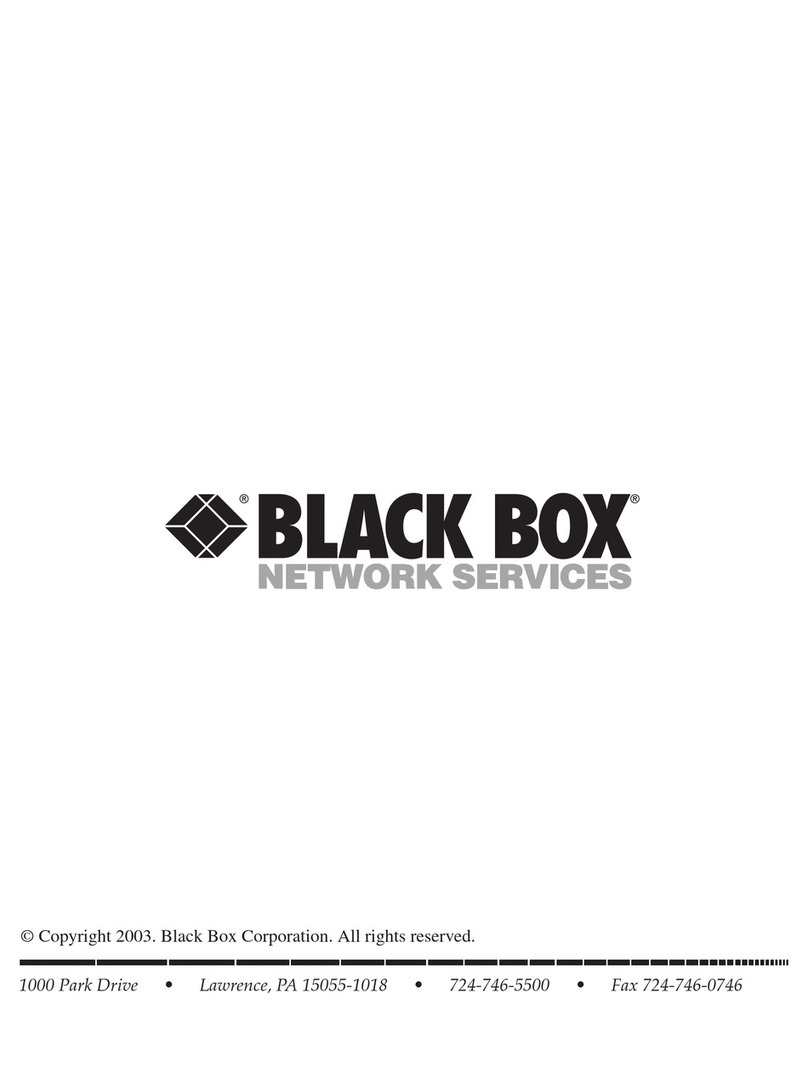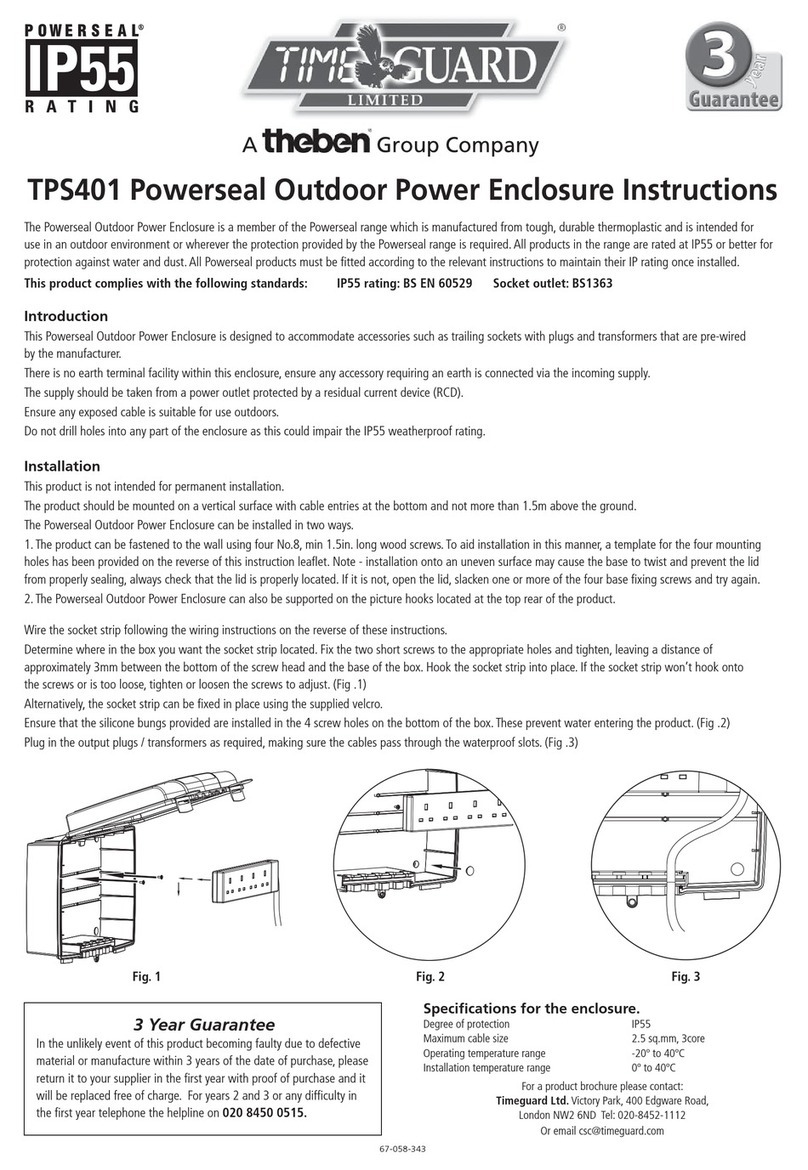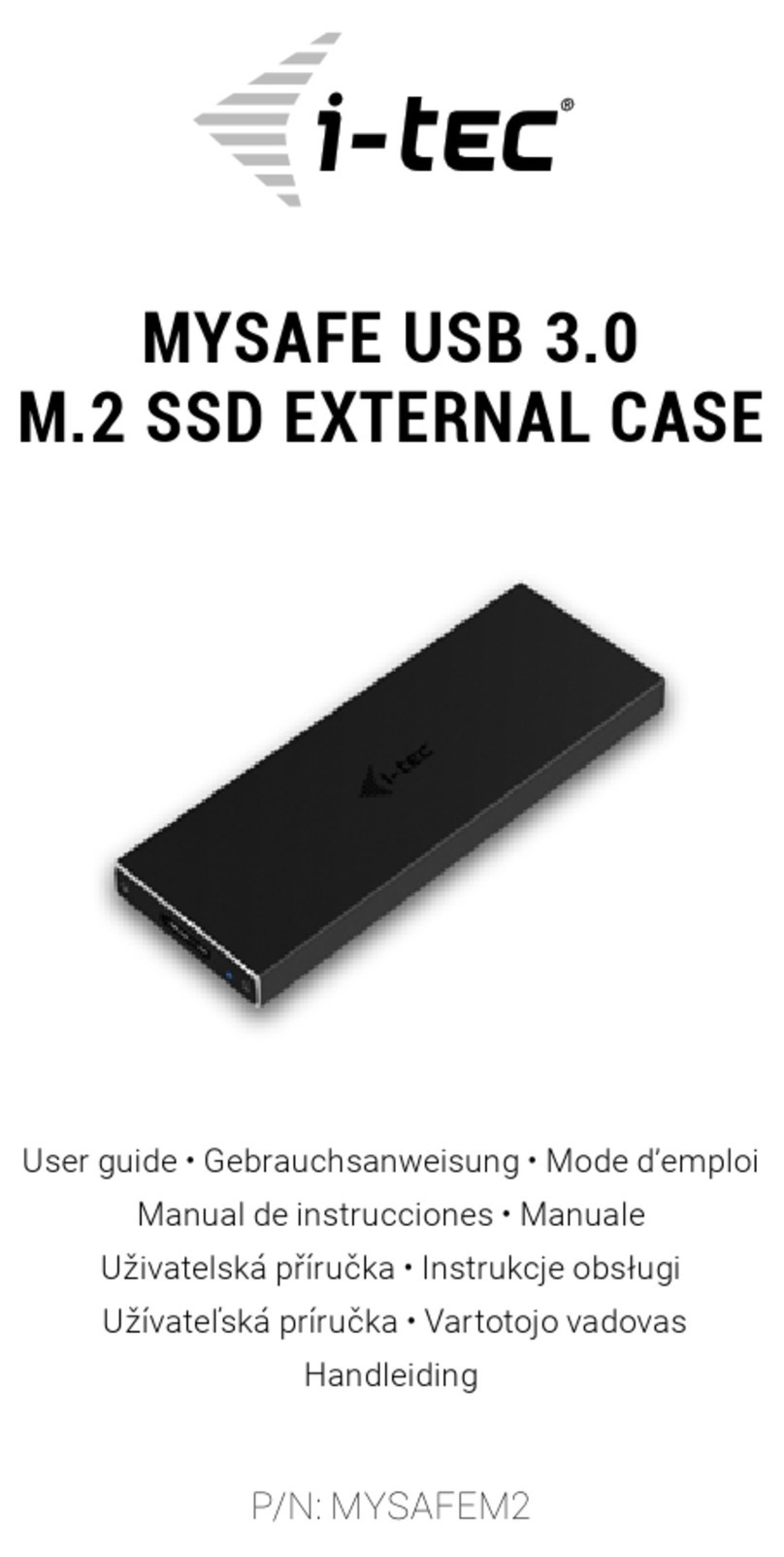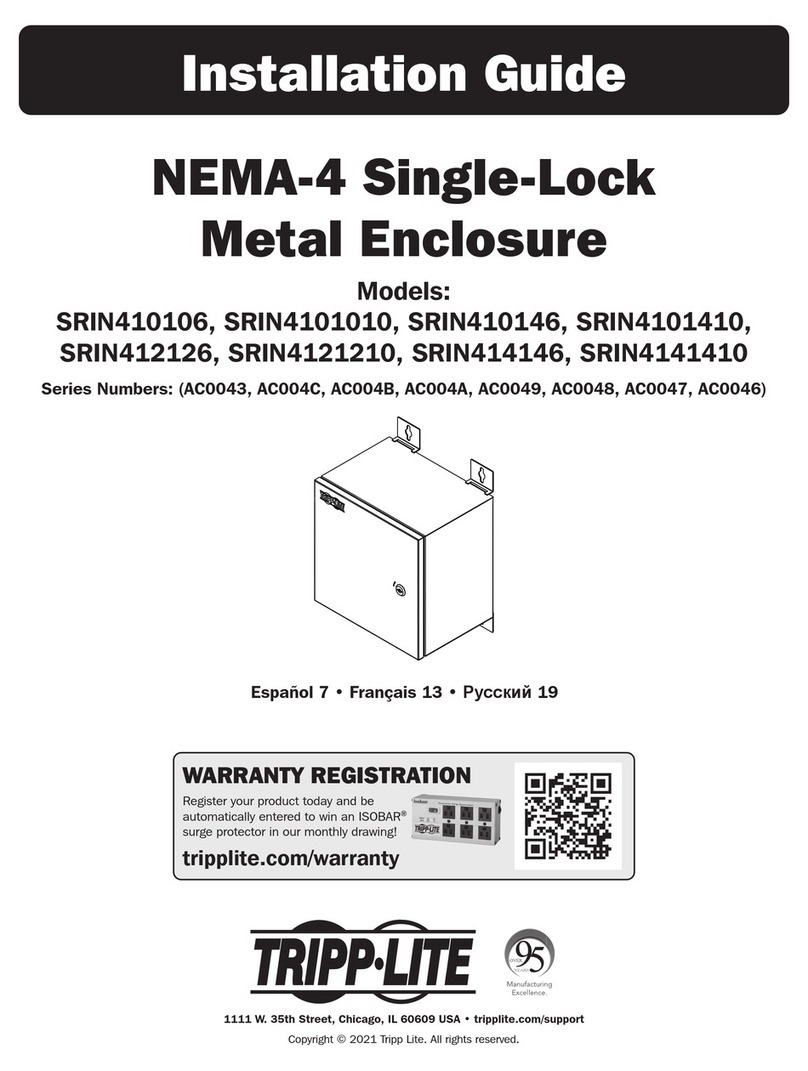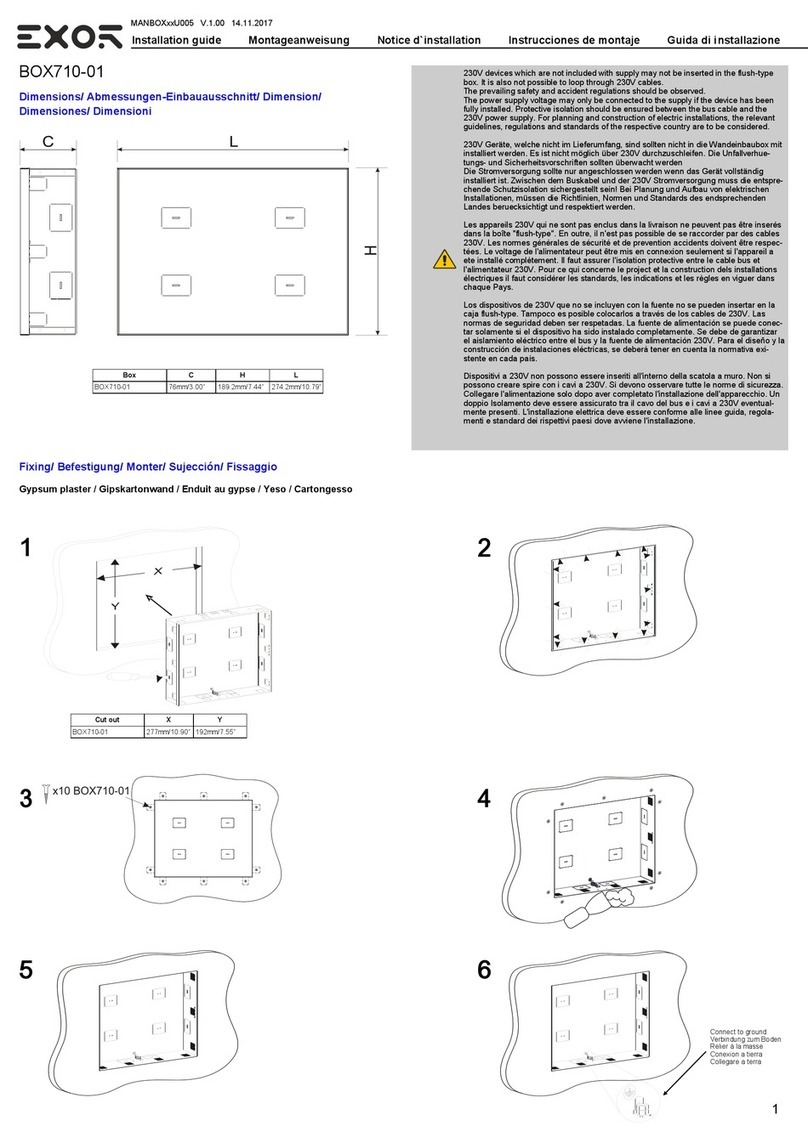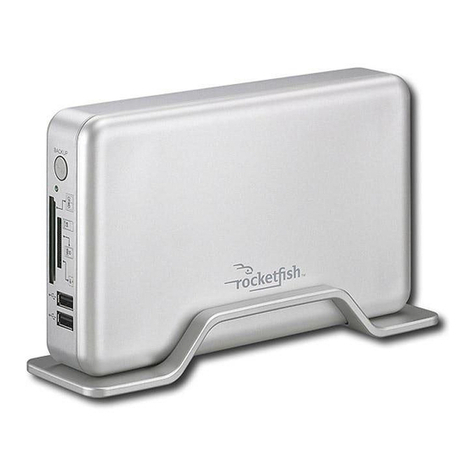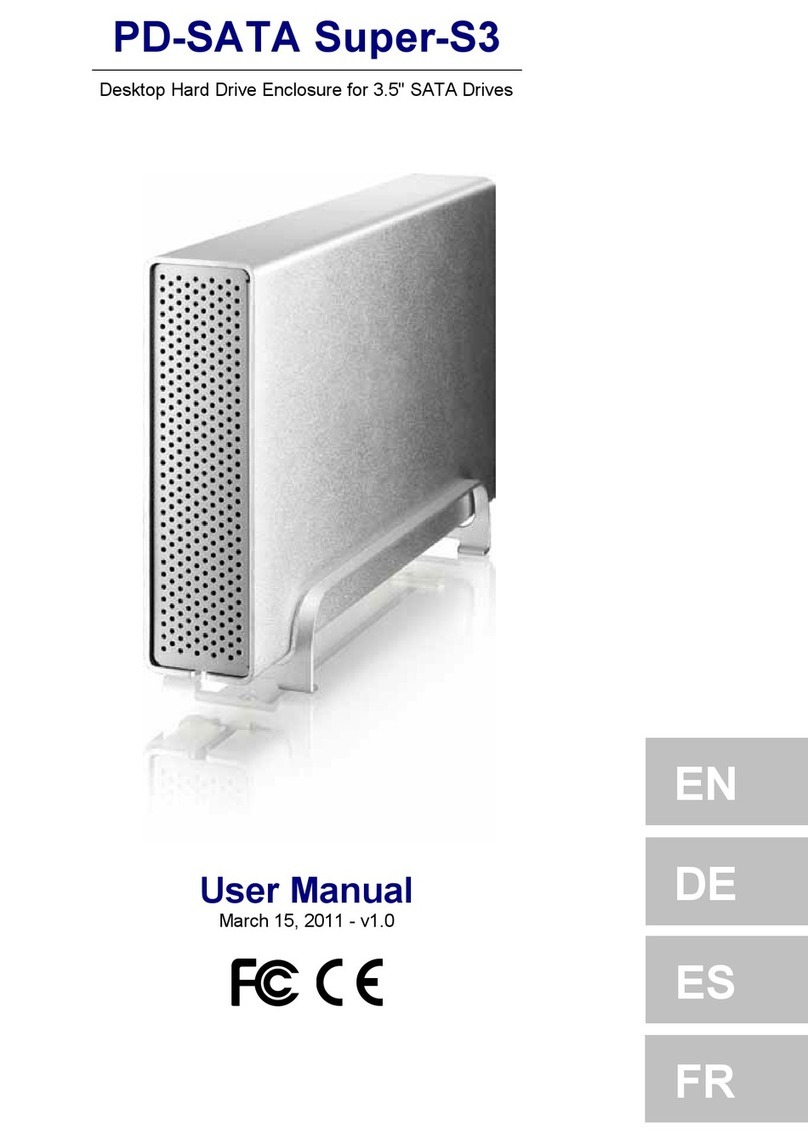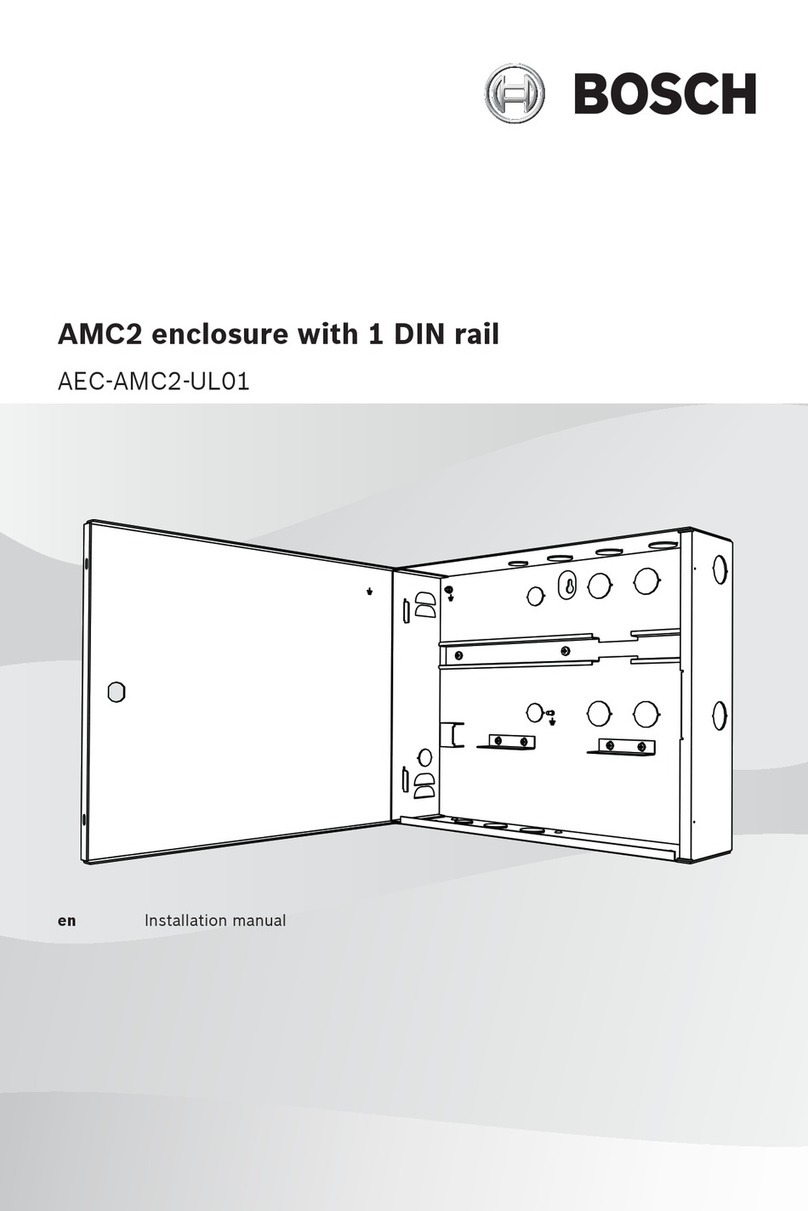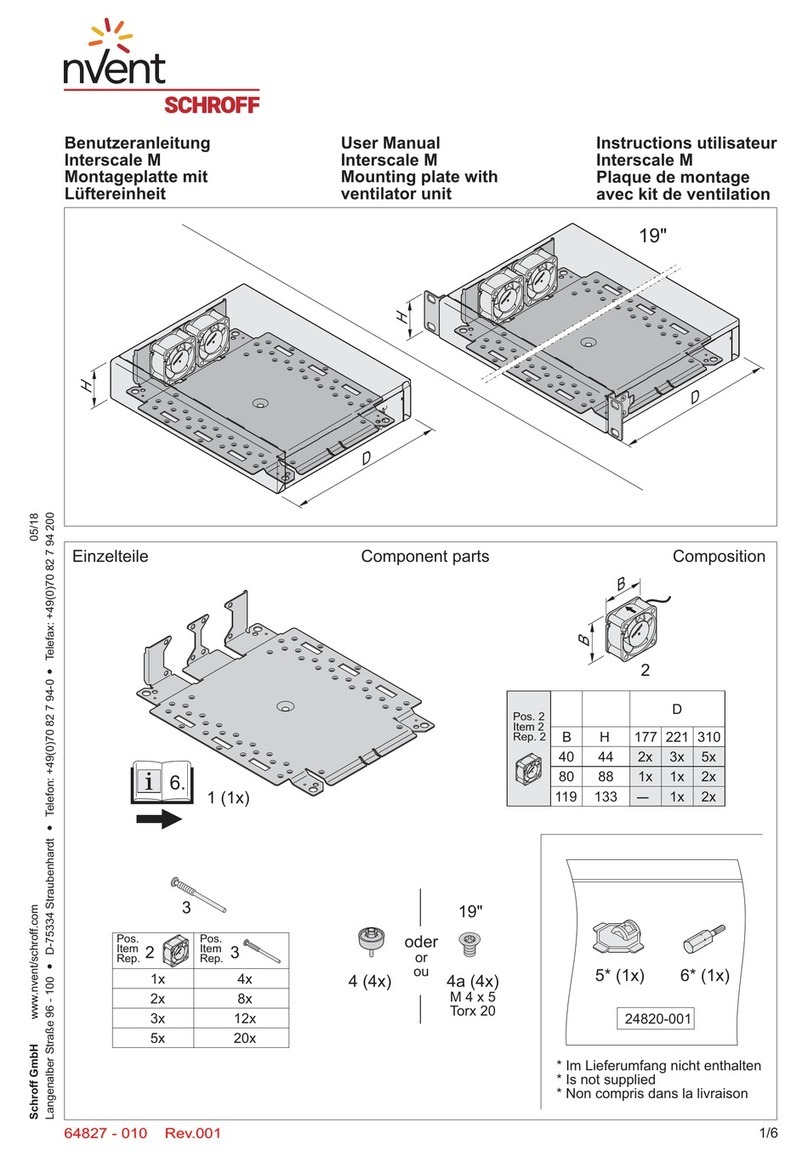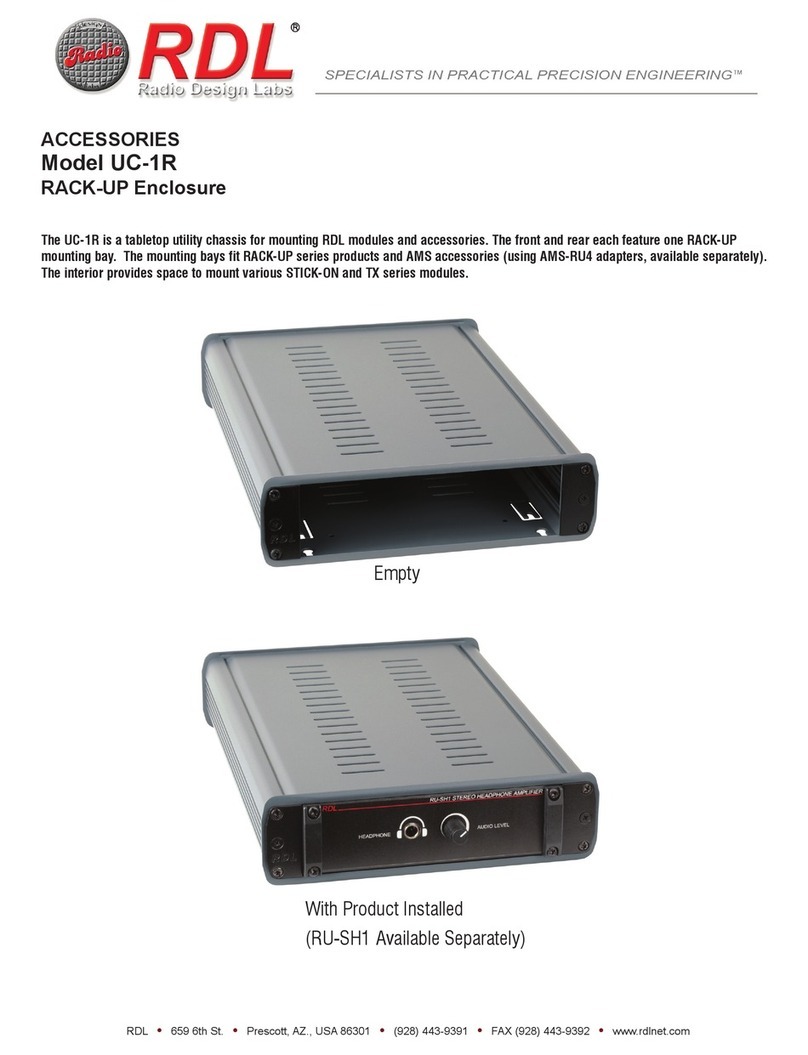turck DeviceNet RM-89 User manual

USER MANUAL MA1007 REV B
Published 4/15/2015
RM-89
DeviceNet™ Resolver

2 www.turck.com • 1-800-544-7769 • Fax: (763) 553-0708 • TURCK • Minneapolis, MN 55441 www.turck.com • 1-800-544-7769 • Fax: (763) 553-0708 • TURCK • Minneapolis, MN 55441 3
TURCK
RM-89
Contents
About this Manual . . . . . . . . . . . . . . . . . . . . . . . . . . . . . . . . . . . . . . . . . . . . . . . . . . . . . . . . . . . . . .3
Chapter 1: Introduction to the RM-89. . . . . . . . . . . . . . . . . . . . . . . . . . . . . . . . . . . . . . . . . . . . . . . . . .4
Chapter 2: Installation . . . . . . . . . . . . . . . . . . . . . . . . . . . . . . . . . . . . . . . . . . . . . . . . . . . . . . . . . . 15
Chapter 3: RSNetWorx For DeviceNet . . . . . . . . . . . . . . . . . . . . . . . . . . . . . . . . . . . . . . . . . . . . . . . . 20
Chapter 4: I/O Messaging Commands . . . . . . . . . . . . . . . . . . . . . . . . . . . . . . . . . . . . . . . . . . . . . . . . 30
Chapter 5: Explicit Messaging Commands. . . . . . . . . . . . . . . . . . . . . . . . . . . . . . . . . . . . . . . . . . . . . .32
Appendix A: CIP Position Sensor Objects . . . . . . . . . . . . . . . . . . . . . . . . . . . . . . . . . . . . . . . . . . . . . . 39
Appendix B: Additional CIP Objects . . . . . . . . . . . . . . . . . . . . . . . . . . . . . . . . . . . . . . . . . . . . . . . . . .44

www.turck.com • 1-800-544-7769 • Fax: (763) 553-0708 • TURCK • Minneapolis, MN 55441 3
About this Manual:
This manual is intended to congure, program, and install the RM-89 resolver with
DeviceNet interface. It includes electrical and mechanical characteristics of the device, as
well as application installation considerations.
Included with the electrical characteristics are:
•Status LEDs
•Power Requirements
•Resolution
•Response Time
•Accuracy
Mechanical Characteristics data includes:
•Package Size
•Connector Location
•Dipswitch Location and Setting
•Housing Material
•Shaft Sizes
•Starting Torque
•Max Operating Speed and Shaft Load
Application and environmental considerations include:
•Operating Temp
•Shock and Vibration
•IP Rating
•Weight
This manual will detail the programmable parameters, including saving them, how to set the address and bus values, dene
the status LEDs, along with a sample of adding it to an RSLogix scan list.

4 www.turck.com • 1-800-544-7769 • Fax: (763) 553-0708 • TURCK • Minneapolis, MN 55441 www.turck.com • 1-800-544-7769 • Fax: (763) 553-0708 • TURCK • Minneapolis, MN 55441 5
TURCK
RM-89
Chapter 1: Introduction to the RM-89
Overview
The RM-89 is a new line of heavy-duty resolver based resolver products from TURCK. This manual is for the RM-89 resolvers
with a DeviceNet interface. TURCK oers RM-89 resolvers for other network protocols such as EtherNet/IP. These products are
covered in separate manuals.
The RM-89 series is composed of absolute single and multi-turn sensors in an IP67 rated, 2.5 inch diameter package. All
RM-89 Networked Resolvers oer a maximum single turn position resolution of 16 bits, which is programmable from 1 to
65,536 counts per turn. A multi-turn unit that encodes 4,096 turns (12 bit + 16 bit =28 bit resolver) is available in addition to
the single-turn RM-89. A ange mount unit with end connectors is shown in gure 1.1. The following mounting styles are
available:
•RM-89 standard ange mount with 3/8", 1/4", or 10mm shafts
•RM-89 standard servo mount with 3/8", 1/4", or 10mm shafts
•RM-89 58 mm servo mount with 6mm or 10 mm shafts
End connect versions of all of these mounting styles are available.
The RM-89 resolver based resolvers for DeviceNet are designed for use with the DeviceNet thin cable media and mate with
the DeviceNet eurofast ® (M12) connectors. DeviceNet thin cable media is commonly used for drop lines o of a trunk line
on large installations or as the only media type on smaller installations. Thin cable media supports total cable lengths of up to
100 meters (330 feet).
Network address and bus speed are set with rotary and DIP switches that are accessible behind the rear cover of the RM-89.
Once the network address and speed is set, the remaining parameters of the RM-89 are congured over its DeviceNet
interface. Parameters allow you to set the count direction, format of the velocity data, number of counts per turn, and the
rollover count, which is the number of counts before the position returns to zero.
During normal operation of the network, the RM-89 supports Explicit, Bit-Strobe, Poll, and Cyclic connection types. The RM-89
can support all of these connection types simultaneously.
All RM-89 resolver based resolvers have two status LED’s to help you determine the state of the device. These LED’s are always
located on the back cover of the RM-89.
•Module Status (MS) – Operating status of the RM-89 itself
•Network Status (NS) – Operating state of the DeviceNet protocol
Figure 1.1 RM-89 Resolver Based Resolver

www.turck.com • 1-800-544-7769 • Fax: (763) 553-0708 • TURCK • Minneapolis, MN 55441 5
Module Status LED
Network Status LED
Table 1.1 Module Status LED States
Table 1.2 Network Status LED States
Available Data
Position Data
All RM-89 resolvers oer position data with a maximum resolution of 65,536 counts per turn. Position data can be scaled
to engineering units. The position data can also be preset which allows you to align the position data with your machine
position without having to physically rotate the shaft.
Velocity Data
Velocity data is also available from the RM-89. Velocity data can be scaled to engineering units and is available as pulses/mil-
lisecond, pulses/second, pulses/minute, or RPM.
Time Stamp
The time stamp is an unsigned double integer value with an interval of 100 nanoseconds. It will roll over every 429.4967296
seconds. The time stamp can be used to verify active communications between the RM-89 and your host controller.
Actual Sensor Reading
This unsigned double integer value is the raw position data from the RM-89. Changing the position scaling parameters or
presetting the position will have no eect on this value.
LED State Denition
O No Power
Alternating Red/Green Self-Test (Run on power up)
Steady Green Device optional
Steady Red Hardware Fault. (Cycle power. If fault persists, contact TURCK for support.)
LED State Denition
O No Power
Alternating Red/Green Power up Self-Test
Flashing Green No established connections, unit in Idle state
Steady Green Connection established
Flashing red Network Connection Timeout
Steady Red Duplicate address on network

6 www.turck.com • 1-800-544-7769 • Fax: (763) 553-0708 • TURCK • Minneapolis, MN 55441 www.turck.com • 1-800-544-7769 • Fax: (763) 553-0708 • TURCK • Minneapolis, MN 55441 7
TURCK
RM-89
Operating Voltage (Supplied over Network)
11 Vdc to 25 Vdc (24 Vdc nominal)
Power Requirements
1.5W max.
50mA @ 24Vdc typical
CIP Implementation
Resolver Device Prole
Supported Network Data Rates
Supports 125, 250, and 500 Kbps
Supported Connection Types
Explicit, Poll, Bit-Strobe, and Cyclic
Single Turn Resolution
Programmable from 1 to 65,536 counts per turn
(16 bit resolution max.)
Multi-turn Resolution
4,096 turns (12 bit)
Direction of Increasing Counts
Default of CW increasing when looking at the shaft.
Programmable to CCW increasing over the
DeviceNet network.
Preset Position
Position can be preset to any value within its range over the DeviceNet network. Internal Position Oset can be stored in
non-volatile memory and retrieved on power up.
Positional Accuracy
±10 arc-minutes
Position Response Time
1 millisecond
Velocity Data Format
Programmable to pulses/minute, pulses/second,
pulses/millisecond, or RPM
Velocity Response Time
100 millisecond
Package Style
2.5 inch housing with ange or servo mounting
Connector Location
End
Electrical Specications
Mechanical Specications

www.turck.com • 1-800-544-7769 • Fax: (763) 553-0708 • TURCK • Minneapolis, MN 55441 7
Housing
Powder coated aluminum
Shaft
0.250", 0.375", 0.625", 6 mm or 10 mm
Max. Starting Torque @ 25°C
2.0 oz-in
Moment of Inertia (oz-in-sec)
6.00 X 10-
Max. Operating Speed
6000 RPM max.
Max. Shaft Loading
Axial: 20lbs. (89N)
Radial: 40lbs. (178N)
At specied max. loads, minimum bearing life is 2X10 revolutions.
Operating Temperature
–40°F to +185°F (–40°C to +85°C)
Shock
50g, 11 millisecond duration
Vibration
20g, 5 to 2000Hz
Enclosure Rating
IP67
Approximate Weight
1.4lbs. (0.65kg)
Mechanical Specications (continued)
Environmental Specications

8 www.turck.com • 1-800-544-7769 • Fax: (763) 553-0708 • TURCK • Minneapolis, MN 55441 www.turck.com • 1-800-544-7769 • Fax: (763) 553-0708 • TURCK • Minneapolis, MN 55441 9
TURCK
RM-89
Programmable Parameters
The following parameters are available on all RM-89 resolvers for DeviceNet. Note that most of these parameter names are
pulled from the ODVA (CIP) specication. They are generic, and sometimes confusing, but they are what is dened in the
specication. TURCK has decided to adopt these parameter names for all RM-89s to avoid additional translations between
protocols with one exception. In the ODVA specication, the parameter that sets the number of counts per turn of the shaft is
called the ‘Measurement Units per Span’. This generic name can be applied to both rotary and linear resolvers. Being that the
RM-89 is a rotary resolver, this manual refers to the parameter as Counts per Turn.
Direction Counting Toggle
This parameter allows you to set the direction of shaft rotation needed to produce increasing counts.
•A value of “0”sets the direction of increasing counts to clockwise when looking at the shaft. This is the
factory default value
•A value of “1” sets the direction of increasing counts to counter-clockwise when looking at the shaft
Eects of Reversing Count Direction
Changing the Direction Counting Toggle parameter changes the way the position value is calculated. When you reverse
the count direction, the position changes from your current position value to (Maximum number of counts – current posi-
tion value). For example, assume a 28 bit RM-89 with its default of 65,536 counts per turn. If the current position value is
100,000 and you change the Direction Counting Toggle parameter, the current position will change to 268,435,456 - 100,000
= 268,335,456. Most applications do not require you to change the count direction after the machine is setup, so the count
direction is typically set before the position value is preset.
Changing the count direction on your machine while maintaining the current position value is a three step process. First, read
and store the current position value from the RM-89. Second, change the Direction Counting Toggle value. Third, write the
stored position value back to the RM-89 as a preset value.
Scaling Function Control
This parameter determines if the position value reported in the network data is scaled to engineering units or if it is reported
at its full 16 bit resolution. Scaling is accomplished with the Counts Per Turn parameter. (see below)
•A value of “0” disables scaling and the position data is reported at 16 bit resolution.
•A value of “1” enables scaling and the position data is reported in the engineering units set by the Counts per
Turn parameter.
Note:
Velocity data can be reported as pulses/second, pulses/millisecond, pulses/minute, or RPM. When reported as pulses/
second, pulses/millisecond, or pulses/minute, the velocity data is always scaled by the Counts per Turn parameter. This is
useful in applications where you require the full position resolution, but want to scale velocity data to an engineering value
such as inches/second, or boxes/minute.

www.turck.com • 1-800-544-7769 • Fax: (763) 553-0708 • TURCK • Minneapolis, MN 55441 9
Programable Parameters (continued)
Counts per Turn
(ODVA: Measuring Units Per Span)
Used to scale the position and/or velocity data from the RM-89.
•Values can range from 2 to 65,536 counts per turn for single turn RM-89 units.
•Values can range from 1 to 65,536 counts per turn for multi-turn RM-89 units.
Position data is only scaled if the Scaling Function Control parameter equals “1”. Velocity data is always scaled.
The number of turns encoded by the RM-89 is not controlled with this parameter. The Total Measurement Range parameter is
used to control when the position data rolls over to zero, which controls the number of turns encoded by the RM-89.
Total Measurement Range
The Total Measurement Range parameter sets the total number of counts before the position value returns to zero. It is
always used when determining the position value. If the Total Measurement Range parameter is left at its default value of
zero, the roll over position is determined by the Counts per Turn parameter and the number of turns the RM-89 can encode. If
the Total Measurement Range is non-zero, it places an upper limit on the position value and the Preset Value parameter. The
Total Measurement Range parameter has the following ranges:
•Single Turn RM-89: Range of 0, 2 to 65,536
•28 bit Multi-turn RM-89: Range of 0, 2 to 268,435,455
Note that the value of the Counts per Turn parameter does not limit the range of values the can be programmed into the Total
Measurement Range parameter. There is no xed relationship between the Total Measurement Range and Counts per Turn
parameters, which leads to interesting applications that use the two parameters.
Roll Over on Fractional Number of Turns
When the Total Measurement Range is less than the total counts available from the RM-89, the position will return to zero
before the full mechanical travel is completed.
•When the Scaling Function Control parameter is disabled, the total counts available equals 65,536 multiplied by the
number of turns the RM-89 can encode.
•When the Scaling Function Control parameter is enabled, the total counts available equals the value of the Counts
per Turn parameter multiplied by the number of turns the RM-89 can encode.

10 www.turck.com • 1-800-544-7769 • Fax: (763) 553-0708 • TURCK • Minneapolis, MN 55441 www.turck.com • 1-800-544-7769 • Fax: (763) 553-0708 • TURCK • Minneapolis, MN 55441 11
TURCK
RM-89
Programmable Parameters (continued)
Total Measurement Range (continued)
Figure 1.3 shows what occurs when the Total Measurement Range parameter is used to divide the full range of travel of the
RM-89 into equal parts. In this case, a twenty-eight bit RM-89 has its 4,096 turns evenly divided into ve cycles of 819.2 turns.
Note:
If the value of {Total Counts ÷ Total Measurement Range} is an integer, the RM-89 remains an absolute rotary sensor. You
can remove power from the RM-89, rotate it as far as you want, re-apply power, and the RM-89 will give you the correct
position value. Figure 1.3 is an example of this setup because the division of the two parameters results in the quotient
value of ve.
Figure 1.4 shows a single turn RM-89 where the Total Measurement Range parameter is not used to divide the full range of
travel into equal parts. In this case, the position value will roll over to zero after 225 degrees of rotation.
In this example, the value of {Total Counts ÷ Total Measurement Range} is a real number, 1.6, instead of an integer.
Note:
When the {Total Counts ÷ Total Measurement Range} quotient is a real number, the RM-89 will power up with the correct
position value as long as the shaft is rotated less than half of the complete span of the resolver while power was removed.
In practical terms:
•RM-89 multi-turn resolvers: If you remove power from the sensor and rotate the shaft such
that the point that you stop at is less than 2,048 turns from the point where you removed power, the
position reading will be correct when you re-apply power.
•RM-89 single turn resolvers: If you remove power from the sensor and rotate the shaft such
that the point that you stop at is less than 180 degrees from the point where you removed power, the
position reading will be correct when you re-apply power.
Note:
If the point that you re-apply power at is greater than the limits listed above, the position value from the
RM-89 will be o by at least ±1 turn.
Figure 1.3 Fractional Turn Example 1
Figure 1.4 Fractional Turn Example 2
28 bit RM-89: 4096 Turns
Counts per Turn = 1,000 Counts
Total Counts = 4,096, 000
Total Measurement Range = 819,200 Counts
RM-89 outputs ve cycles of counts from 0 to 819,199 over 4,096 turns
0 0 0 0
0
0
One Rotation of a Single Turn RM-89
Counts per Turn = 36,000 counts
Total Measurement Range = 22,500 Counts
RM-89 outputs one cycle of counts from 0 to 22,499 for every 225 degrees of rotation.
0 0 0 0
0

www.turck.com • 1-800-544-7769 • Fax: (763) 553-0708 • TURCK • Minneapolis, MN 55441 11
Programmable Parameters (continued)
Total Measurement Range (continued)
Encoding Additional Turns
When the Scaling Function Control parameter is enabled, and the Counts per Turn parameter is set to a value less than the
maximum, the Total Measurement Range parameter can be used to require additional rotations of the shaft before the
position value reaches the roll over count. For example, assume a single turn RM-89 that has its Counts per Turn parameter
set to 360 and its Total Measurement Range parameter set to 64,800. With this setup, the shaft of the RM-89 must rotate 180
turns, {64,800 ÷ 360}, before the position returns to zero. In this application, the single turn RM-89 acts as a 180 turn resolver
with one degree position resolution.
The same trade o between resolution and number of turns encoded can be made with the multi-turn RM-89 resolvers. For
example, if a 28-bit RM-89 resolver has its Counts per Turn parameter set to 360 and its Total Measurement Range parameter
set to its maximum of 268,435,456, the RM-89 will encode 745,654.04 turns with one degree resolution.
In all of these applications, the RM-89 will act with the same motion restrictions listed in the Roll Over on Fractional Number
of Turns section above. Exceeding these limits will result in a position value error of at least ± 1 turn when power is re-applied.
Velocity Format
The RM-89 can transmit velocity data over the network in addition to position data. This parameter sets the units of measure
for the velocity data. This integer parameter has four xed options.
•16#1F04 (7,940 dec.) = pulses/second
•16#1F05 (7,941 dec.) = pulses/millisecond
•16#1F07 (7,943 dec.) = pulses/minute
•16#1F0F (7,951 dec.) = RPM
Note:
Velocity data is always scaled by the Counts per Turn parameter. This is useful in applications where you require the full
position resolution, but want to scale velocity data to an engineering value such as inches/second, or boxes/minute.
Preset Value
This parameter allows you to preset the position to any value in its single or multi-turn range without rotating the shaft. The
range of values depends on the state of the Scaling Function Control parameter and the value of the Total Measurement
Range parameter.
•When the Scaling Function Control parameter is disabled:
If the Total Measurement Range parameter equals zero, the Preset Value range is:
0 to 65,535 for single turn RM-89 resolvers
0 to 268,435,455 for multi-turn RM-89 resolvers
If the Total Measurement Range parameter is not equal to zero, the Preset Value range is:
0 to (value of Total Measurement Range parameter) - 1
•When the Scaling Function Control parameter is enabled:
If the Total Measurement Range parameter equals zero, the Preset Value range is:
0 to ({value of Counts per Turn parameter} - 1) for single turn RM-89 resolvers
0 to ({value of Counts per Turn parameter * 4,096} - 1) for multi-turn RM-89 resolvers
If the Total Measurement Range parameter is not equal to zero, the Preset Value range is:
0 to (value of Total Measurement Range parameter) - 1

12 www.turck.com • 1-800-544-7769 • Fax: (763) 553-0708 • TURCK • Minneapolis, MN 55441 www.turck.com • 1-800-544-7769 • Fax: (763) 553-0708 • TURCK • Minneapolis, MN 55441 13
TURCK
RM-89
Programmable Parameters (continued)
Device Type
You can program how the RM-89 denes itself to the DeviceNet controller. This parameter has a double integer (32 bit) data
type and two xed values.
•0x22 = Resolver Device (factory default value)
•0x00 = Generic Device
Non-Volatile Memory
The RM-89 has Flash memory available to store parameter values and the position oset that results from a Preset Position
operation. These values are not automatically stored to ash when they are changed. You must issue a separate “Save to
Flash”command to store these values.
Note:
The Flash memory in the RM-89 is guaranteed for 10,000 write cycles. Exceeding this limit will eventually lead to failure of
the memory and the RM-89 will no longer function properly.
This limit will not be an issue for most applications. Parameter values are rarely, if ever, changed once the machine is installed
and commissioned. For those applications that often change parameter values, these values can be written down to the
RM-89 as part of the machine’s power up sequence and never stored to Flash memory.
Saving the Position Oset Value
When the position is preset with a Preset Position command, the RM-89 calculates an internal oset that is used to bring the
reported position to the programmed Preset Value. This internal oset is not stored in Flash memory and will be lost when
power is removed from the unit.
•If part of the machine’s power up sequence is homing the position, then the machine’s design as-sumes the
position is incorrect on power up. Therefore, there is no reason to store the internal oset to Flash memory.
•Absolute position applications will usually preset the position during machine installation and
commissioning. The “Save to Flash”command is then issued once to store the internal oset. As long as
there is no mechanical slippage in the machine, the position will always remain correct.
Some applications require the position to be preset multiple times while the machine is running and the last internal oset
must be stored to non-volatile memory as part of the machine’s power down sequence. If your application falls into this
category, you have two options:
1) When you need to preset the position value from the RM-89, calculate and store the required oset in
your host controller. You will never issue a “Preset Position”command to the RM-89.
2) Set the Total Measurement Range parameter to a non-zero value. When this parameter is non-zero, the
RM-89 constantly updates and stores the internal oset in a FRAM memory. This includes storing the
internal oset when a“Preset Position:” command is issued. FRAM is a new memory technology that is
non-volatile, but can be written to like RAM. (According to the manufacturer’s specications, writing to
the memory every millisecond will burn out the memory in approximately 300 years.)
If you decide to use the Total Measurement Range parameter only to make sure the internal oset is
automatically stored in non-volatile memory, set this parameter to its maximum value so the
RM-89 remains an absolute sensor.
•When the Scaling Function Control parameter is disabled, set the Total Measurement Range parameter to
65,536 multiplied by the number of turns the RM-89 can encode. (65,536 or 268, 435, 456 counts)
•When the Scaling Function Control parameter is enabled, set the Total Measurement Range parameter to
the value of the Counts per Turn parameter multiplied by the number of turns the RM-89 can encode.

www.turck.com • 1-800-544-7769 • Fax: (763) 553-0708 • TURCK • Minneapolis, MN 55441 13
Non-Volatile Memory (continued)
Saving the Position Oset Value (continued)
If you are using the Total Measurement Range parameter to control where the position returns to zero, set it to the appropri-
ate value for your application.
Note:
The Total Measurement Range parameter only aects how the internal position oset is stored. You must still issue a com-
mand to save the programmable parameters to non-volatile memory.
Explicit Commands
The RM-89 can be completely controlled by explicit instruction commands from the host controller. Most of these commands
are not needed in typical applications and the data for these commands is given in the two appendices. The most commonly
used commands are explained in chapter 5, Explicit Messaging Commands, starting on page 31. These commands are:
•Program Parameters
•Preset Position
•Save to Flash
•Restore from Flash
•Return to Factory Defaults
•Reset Device
Factory Default Settings
The factory default settings for the RM-89 are given in the table below.
Parameter Setting Description
Bus Address 63 Set by rotary switches on back of RM-89
Bus Speed 125 KHz Set by DIP switches on back of RM-89.
Bus Terminator OFF Set by DIP switch on back of RM-89.
Count Direction CW Aected by“Return to Factory Defaults”command
Scaling Function Control ON Aected by“Return to Factory Defaults”command
Counts per Turn 65,536 Aected by“Return to Factory Defaults”command
Total Measurement Range 0 Aected by“Return to Factory Defaults”command
Velocity Format pulses/second Aected by“Return to Factory Defaults”command
Internal Position Oset 0 Aected by“Return to Factory Defaults”command
Device Type 0x22 CIP Resolver Prole Device
Table 1.3 Factory Default Settings

14 www.turck.com • 1-800-544-7769 • Fax: (763) 553-0708 • TURCK • Minneapolis, MN 55441 www.turck.com • 1-800-544-7769 • Fax: (763) 553-0708 • TURCK • Minneapolis, MN 55441 15
TURCK
RM-89
Notes:

www.turck.com • 1-800-544-7769 • Fax: (763) 553-0708 • TURCK • Minneapolis, MN 55441 15
Chapter 2: Installation
Shaft Loading
Limit shaft loading to the following values. These values statistically yield an L10 life of 2X10 revolutions. (Statistically, only
10% of the bearings will have failed after 2X10 revolutions.) Shaft loading has an exponential eect on bearing life. The bear-
ings will statistically last longer if you can limit shaft loading below the given values.
Setting the DeviceNet Address and Bus Values
The large plug on the back of the RM-89 covers the switches that set the address of the RM-89 on the DeviceNet bus. Figure
2.1 below shows the rear cover of the RM-89 with the plug removed.
The state of the switches is only read on power up. You must cycle power to the RM-89 before changes to the switch settings
take eect.
DeviceNet Bus Address
The bus address is set with the two rotary switches. When the RM-89 is in the orientation shown in gure 2.1, the switch for
the “tens” digits on the left and the switch for the “ones”digit is on the right. The valid address range is 00 to 63. Note that no
two devices on a DeviceNet network can share the same address.
• On power up, if the address has been changed to a new valid address, the RM-89 will store this address in
non-volatile memory. If the bus address switches are set later set to a value above 63, the RM-89 will use
the stored address as the address of the device.
• The RM-89 for DeviceNet ships with an address of 63.
Table 2.1 Suggested Shaft Loading Maximums
Radial Load Axial Load
40 lbs. (178 N) 20 lbs. (88 N)
Figure 2.1 Address and Bus Value Switch Locations
ON
0
1
2
3
4
5
6
7
8
9
0
1
2
3
4
5
6
7
8
9
1 2
1
ON
DIP SW
OFF ON
POS
ZERO
BUS
SPEED
BUS
ADDR
BUS
TERM
Bus Address
“Tens” digit
Bus Address
“Ones” digit

16 www.turck.com • 1-800-544-7769 • Fax: (763) 553-0708 • TURCK • Minneapolis, MN 55441 www.turck.com • 1-800-544-7769 • Fax: (763) 553-0708 • TURCK • Minneapolis, MN 55441 17
TURCK
RM-89
Switch
Setting Bus Speed
125 KHz
250 KHz
500 KHz
Last Stored in Flash
Table 2.2 Bus Speed Settings
Setting the DeviceNet Address and Bus Values (continued)
Bus Speed
Bus speed is set with the bank of two DIP switches. Table 2.2 below shows the settings for the three supported bus speeds.
Note that the all devices on the DeviceNet network must have the same bus speed.
• On power up, if the bus speed has been changed to a new valid value, the RM-89 will store the new bus
speed in non-volatile memory. If the bus speed switches are later set to“Last Stored”setting, the RM-89
will use the last value stored in Flash memory as the bus speed of the device.
ON
12
ON
12
ON
12
12
ON

www.turck.com • 1-800-544-7769 • Fax: (763) 553-0708 • TURCK • Minneapolis, MN 55441 17
Setting the DeviceNet Address and Bus Values (continued)
DeviceNet Terminators
The DeviceNet trunk must be terminated on both ends for proper operation. When using the RM-89 you have two options.
•The RM-89 has an internal terminating resistor that can be turned on or o with the Bus Term switch shown
in gure 2.1.
• An external bus termination resistor can be used.
If the RM-89 is the last device on the DeviceNet network, the bus must be terminated at the RM-89.
•In large applications, the RM-89 will often attach to the DeviceNet trunk through a T-Port tap and a termination
resistor can be installed on the un-used connector of the tap. If this is done, the termination resistor
must not be turned on inside the RM-89. This conguration allows you to physically remove the RM-89
from the network without disrupting communications between the other devices
• You also have the option to install a terminator on the Bus Out connector of the RM-89. See TURCK’s full line
of network media connectivity.
Replacing the Plug
Once the bus switches have been set, the plug must be re-installed and securely tighten in order to maintain the IP rating of
the RM-89. Use care when installing the plug so that the o-ring that seals against the back cover is not damaged.
Connector Pinouts
The diagram below shows the pinouts of the two eurofast ® connectors on the RM-89 resolvers for DeviceNet. These units
have a part number that ends in “M12”. It is possible to order RM-89 units without the Bus Out connector. These units have
a plug installed in place of the connector. Unused connectors must be capped for the unit to retain its IP67 rating. Contact
TURCK for additional options
NS
BUS
OUT
BUS
IN
MS
DIP SW
BUS
TERM
POS
ZERO
BUS
ADDR
BUS
SPEED
OFF ON
12
3
4
12
3
4
Industry Standard
M12 Connector
A-Coded, 5 Pin Female
Industry Standard
M12 Connector
A
-Coded, 5 Pin Male
1
1
2
2
3
3
4
4
5
5
Figure 2.2 Connector Pinout

18 www.turck.com • 1-800-544-7769 • Fax: (763) 553-0708 • TURCK • Minneapolis, MN 55441 www.turck.com • 1-800-544-7769 • Fax: (763) 553-0708 • TURCK • Minneapolis, MN 55441 19
TURCK
RM-89
Connector Pinouts (continued)
The following table lists the pinouts of the three connectors used on the RM-89 resolvers for DeviceNet. .
1) Pin 1 on the Bus In and Bus Out connectors are internally connected to each other and are connected to
the body of the RM-89 through a 2 nF capacitor
Compatible Wiring
TURCK oers a full line of DeviceNet compatible interconnections. Installing a pre-assembled and tested cordset is the most
common way to wire a DeviceNet system. For those companies wishing to make their own cables, cable and connectors are
also available from TURCK. See TURCK’s full line of network media connectivity at www.turck.com.
Connectors
Tables 2.5 and 2.6 list the TURCK part number of the straight and right angle mating connectors for the BUS IN and BUS OUT
connectors.
Pin Number
1 2 3 4 5
Connector
Bus In See Note 1
(Shield Drain)
+Voltage
(Red)
-Voltage
(Black)
CAN_H
(White)
CAN_L
(Blue)
Bus Out See Note 1
(Shield Drain)
+ Voltage
(Red)
– Voltage
(Black)
CAN_H
(White)
CAN_L
(Blue)
Table 2.4 DeviceNet Connector Pinouts
Table 2.5 Suggested Mating Connectors - BUS IN/OUT
B 8151-0/PG9/DNET BUS IN mating connector, A-coded, female, straight. Screw terminal connections. 6 to
8 mm dia. cable. Plastic body. IP67 rated when properly installed.
B 8151-0/PG9/DNET BUS IN mating connector, A-coded, female, right-angle. Screw terminal connections.
6 to 8 mm dia. cable. Plastic body. IP67 rated when properly installed.
BS 8151-0/PG9/DNET BUS OUT mating connector, A-coded, male, straight. Screw terminal connections. 6 to
8 mm dia. cable. Plastic body. IP67 rated when properly installed
BS 8151-0/PG9/DNET BUS OUT mating connector, A-coded, male, right-angle. Screw terminal connections.
6 to 8 mm dia. cable. Plastic body. IP67 rated when properly installed.
Table 2.6 Suggested Molded Cordset - BUS IN/OUT
RKC 572 - *M BUS IN mating cordset, A-coded, female, straight Grey PVC cable,
4.22AWG with drain. Nickel Plated Brass couplin nut. IP69K
WKC 572 - *M BUS IN mating cordset, A-coded, female, right-angle Grey PVC cable,
4.22AWG with drain. Nickel Plated Brass couplin nut. IP69K
RSC 572 - *M BUS OUT mating cordset, A-coded, male, straight Grey PVC cable,
4.22AWG with drain. Nickel Plated Brass couplin nut. IP69K
WSC 572 - *M BUS OUT mating cordset, A-coded, male, right-angle Grey PVC cable,
4.22AWG with drain. Nickel Plated Brass couplin nut. IP69K

www.turck.com • 1-800-544-7769 • Fax: (763) 553-0708 • TURCK • Minneapolis, MN 55441 19
Status LED’s
As shown in gure 2.2 on page 16, the RM-89 has two status LED’s on the rear cover. These LED’s are present on side
connector units as well. The tables below list the various states of the LED’s and their meaning.
Module Status LED
Network Status LED
Position Reset
The large plug on the back of the RM-89 covers a momentary push button that can be used to reset the position data to zero.
See gure 2.1, Address and Bus Value Switch Locations on page 14 for the location of the switch.
• The position is reset to zero on every press of the button and the resulting oset is stored in Flash
memory.
• The position can also be preset over the network, but using the push button may be easier in some
applications.
Note:
Once the position is reset to zero, the plug must be re-installed and securely tighten in order to maintain the IP rating of the
RM-89. Use care when installing the plug so that the o-ring that seals against the back cover is not damaged.
Table 2.7 Module Status LED States
LED State Denition
O No Power
Alternating Red/Green Self-Test (Run on power up.)
Steady Green Device Operational
Steady Red Hardware Fault. (Cycle power. If fault persists, contact TURCK for sup-
port.)
LED State Denition
O No Power
Alternating Red/Green Power up Self-Test
Flashing Green No established connections, unit in Idle state
Steady Green Connection established
Flashing Red Network Connection Timeout
Steady Red Duplicate address on network.
Table 2.8 Network Status LED States

20 www.turck.com • 1-800-544-7769 • Fax: (763) 553-0708 • TURCK • Minneapolis, MN 55441 www.turck.com • 1-800-544-7769 • Fax: (763) 553-0708 • TURCK • Minneapolis, MN 55441 21
TURCK
RM-89
Chapter 3:
RSNetWorx For DeviceNet
This chapter provides information on adding the RM-89 to your DeviceNet network using
the Rockwell Automation software RSNetWorx for DeviceNet and RSLinx.
Communications Driver in RSLinx
If not previously installed, you must add a driver to RSLinx so that your computer can communicate on the DeviceNet net-
work. The instructions to add a driver depends on the version of RSLinx you are running and the revision of the software.
Refer to your software’s literature for information on installing a DeviceNet driver.
• Literature for all Rockwell Automation products can be found at:
http://literature.rockwellautomation.com
Installation of the EDS File
RSNetWorx require an Electronic Data Sheet, also known as an EDS le, before it can be used to congure the RM-89.
• The EDS le for the RM-89 can be found on the TURCK website at www.turck.com. The le for the DeviceNet RM-89
is a ZIP le that you will have to extract to a local folder. The ZIP le contains both the EDS and icon (ico) les.
Once RSNetWorx for DeviceNet is started, complete the following to install the EDS le:
1) Go to Tools - EDS Wizard and click on the [Next] button to start the process.
2) Follow the prompts until you reach the screen where you can browse for the eds le. Click on the
[Browse...] button and navigate to the folder where you extracted the EDS and icon les to.
3) Follow the prompts until you reach the screen where you can select the device icon. Click on the device in
the graphic tree and select the [Change Icon] button.
4) In the new screen, click on the [Browse...] button and navigate to the folder where you extracted the EDS
and icon les to. Select the icon le.
5) Click through the rest of the screens until you click on the [Finish] button to complete the process.
Table of contents
